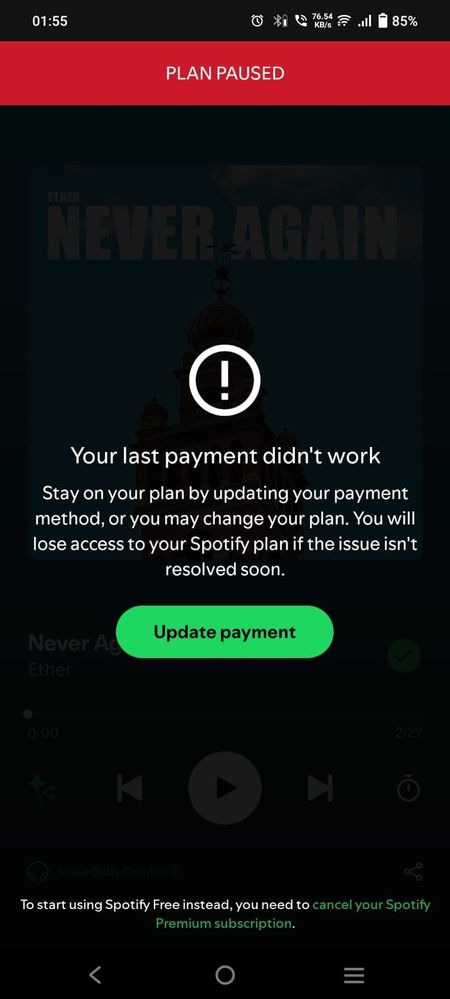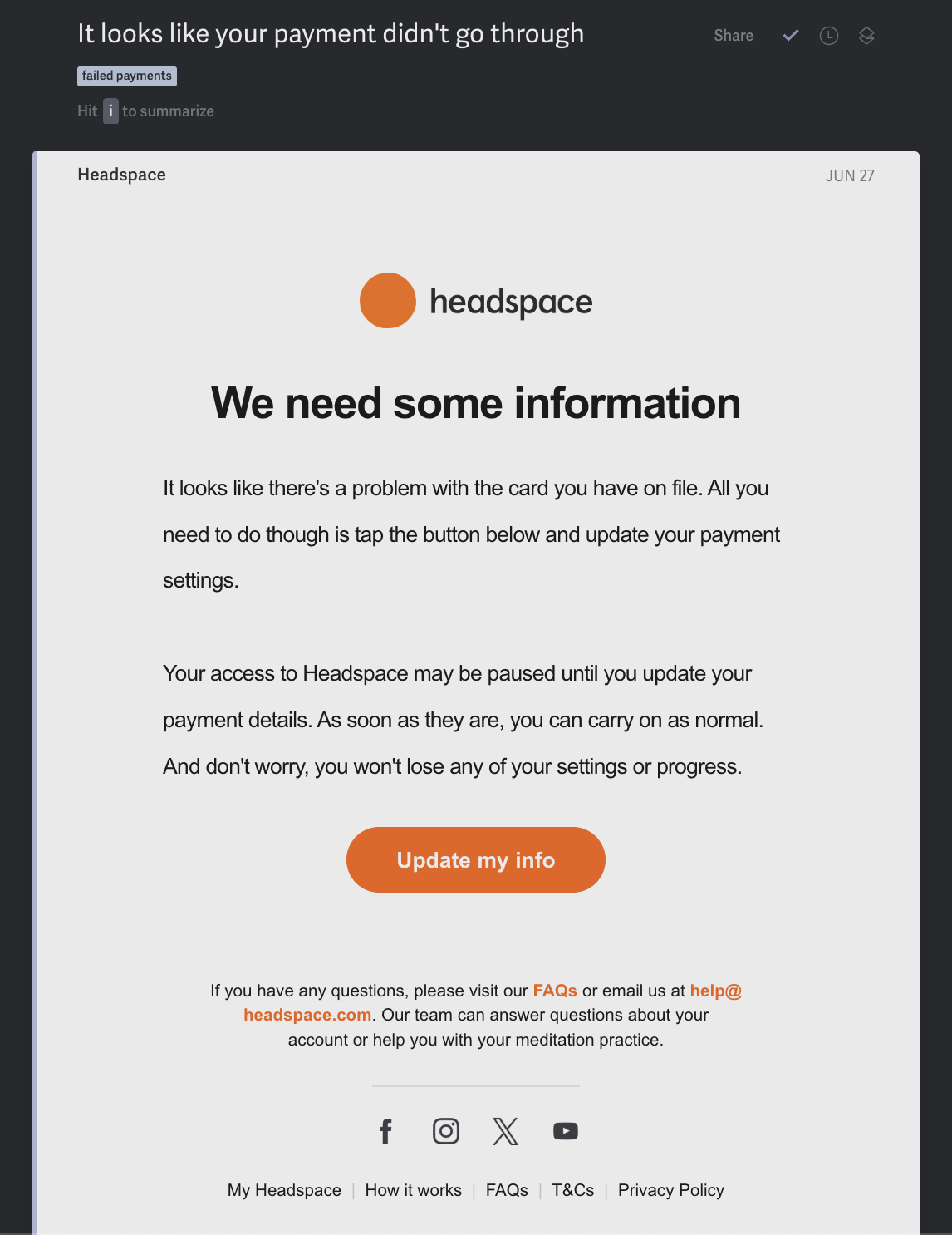.png)
.png)
.png)
The Bottom Line: Stripe Billing users can supercharge failed payment recovery by stealing tactics from Netflix and Amazon. Using AI-powered retry timing and multi-channel orchestration to dramatically boost recovery rate, turning that orange dashboard bar into serious ARR growth.
If you're using Stripe Billing, you know the bar. That orange strip in your dashboard, cataloging every failed payment like a monument to lost revenue.
Most founders see that orange bar and think, 'Well, Stripe's handling the retries automatically.' And they're right, Stripe is doing exactly what it's designed to do.
But here's what most don't realize: there's an entire layer of sophisticated recovery tactics that can be built on top of your existing Stripe setup. The same tactics Netflix, Amazon, and Spotify use to turn failed payments from a revenue leak into a retention machine.
If you're ready to stop leaving money on the table, here's exactly how the subscription giants have cracked the code on payment recovery.
Netflix, Amazon, and Spotify didn't become subscription juggernauts by accident. They treat failed payment recovery like their CFO depends on it (because they do). Behind the scenes, they're running sophisticated recovery operations that would make your head spin.
The result? Industry-leading recovery rates that lower churn, increase LTV, improve CAC payback, and free up more budget for growth. All while their customers barely notice anything happened.
The Full Revenue Recovery Stack:
AI-retries don’t just wait and hope. They study why the payment failed, then use real-world patterns, like paydays, bank behavior, and time zones, to find the moment a card is most likely to succeed. Instead of retrying blindly, they retry with precision. Quietly recovering more revenue, without lifting a finger.
In-app notifications reach customers while they're already engaged. It's like Spotify pausing your perfectly curated playlist to say "Hey, your card expired, want to fix this so the music keeps playing?" instead of letting you discover it next week when you're wondering why your account went silent. Solve the problem while they're still invested in the solution.

Progressive lockouts increase pressure over time. Start with a dismissible banner, escalate to harder-to-ignore modals, then eventually block features. Think of it as your app tapping you on the shoulder, then clearing its throat, then finally blocking the doorway.

Optimized emails are your brand's empathy engine in action. Forget those aggressive "PAYMENT FAILED" emails that sound like they were written by a collections agency having a bad day. These are the understanding friend who acknowledges that card issues are just part of modern life, then hands you a solution so frictionless you'll actually thank them for the reminder.

Frictionless card updates remove every friction point. No login required, no password hunting, no security questions. Just "drop your new card info here and you're done."
Multi-payment options - when the main card fails, give them another path. Apple Pay, Google Pay, backup cards. One click, problem solved.
SMS alerts hit customers where they actually look. While emails sit unread for days, texts get attention within minutes.
Recovering failed payments is a game of inches. Each piece alone plays a small part, but stack them together and you're looking at best-in-class recovery rates.
Think of it like a safety net so sophisticated that most customers never realize they fell into it. Your AI-retries work the night shift. Your in-app notifications catch them while they're engaged. Your emails smooth-talk them back. And your frictionless forms make fixing things feel effortless, not embarrassing.
Where basic Stripe retries might get you 30-40% recovery, a full recovery suite pushes that north of 50-60%. Each component amplifies the others, turning what used to be lost revenue into a predictable, automated retention machine.
I get it. You're reading this thinking, "Great, another thing I need to build and maintain." The last thing you want is to turn your product team into payment recovery experts.
But here's the reality check: Netflix has dedicated teams for this. Amazon has entire departments. You probably have Sarah from customer success manually emailing people about failed payments between putting out other fires.
Your product team shouldn't be experts on credit cards. They should be experts on your actual product. The companies winning at recovery have either built massive internal teams or partnered with specialists who live and breathe this stuff.
Payment recovery done for you. Think of Redux as your dedicated payment recovery team. While your engineers ship features that move the needle, we're silently turning your failed payments into profit.
We've built the entire arsenal: AI-powered retry engines, progressive lockout systems, optimized email sequences that feel like they came from your brand. You don't need to become a payment recovery expert. We handle the entire recovery process while you focus on building a product people want to pay for.
And the best part is it’s pure performance based. No upfront fees, no monthly retainers, no risk on your end. We get paid a small percentage of the revenue we recover for you above your Stripe baseline.
It's like having Netflix's payment recovery team without Netflix's budget. Your leaky revenue bucket gets patched by specialists who've optimized every retry sequence across countless SaaS companies, and we only make money when we make you a lot more money.
Every failed payment in your dashboard represents a customer who wants to stay but needs help solving a problem. The question isn't whether you can afford to build sophisticated recovery, it's whether you can afford to keep running that leaky boat while your competitors sail past you.
The most successful subscription businesses treat payment recovery like customer acquisition: as a strategic growth lever that deserves dedicated expertise, not a technical afterthought.
That orange bar in your dashboard? It's actually an opportunity disguised as a problem. The only question is whether you're going to grab it.
.png)